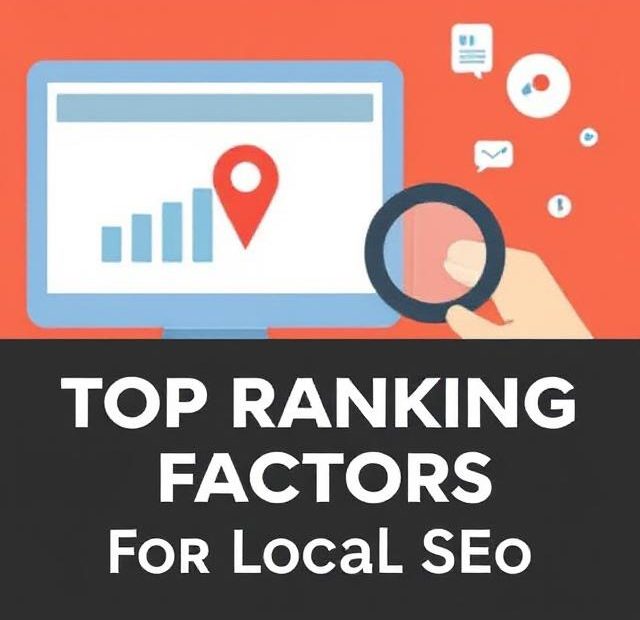In an age where more customers are searching online for services “near me,” mastering local SEO has never been more crucial. As we head into 2025, Google’s algorithm continues to evolve, and so do the key ranking factors that influence how businesses appear in local search results.
Whether you’re a small business owner, digital marketer, or SEO enthusiast, understanding the top local SEO ranking factors in 2025 will give you a competitive edge in driving local traffic, visibility, and conversions.
Let’s explore the most important local SEO ranking signals for 2025.
1. Google Business Profile (GBP) Optimization
Still the #1 Local SEO asset in 2025, your Google Business Profile (formerly Google My Business) is vital for appearing in the local pack and map listings.
Key GBP optimization tips:
-
Use your real business name (no keyword stuffing!)
-
Choose the correct primary category
-
Add all secondary categories that apply
-
Keep hours accurate and update for holidays
-
Add high-quality photos regularly
-
Use Google Posts to share news, offers, and events
-
Enable and respond to messages
Pro tip: Google now pulls more insights from GBP Q&A, so answer common questions and encourage customers to ask more.
2. Local Reviews and Reputation Management
Customer reviews are more influential than ever. Google now uses sentiment analysis and even review frequency to determine local rankings.
To improve your review signals:
-
Consistently request reviews (via email, SMS, or after service)
-
Aim for recent, diverse, and keyword-rich reviews
-
Respond professionally to both positive and negative feedback
-
Don’t incentivize fake reviews — Google is cracking down with AI detection
Businesses with a steady flow of authentic, positive reviews have a much better chance of appearing in the 3-pack.
3. On-Page SEO with Local Relevance
Google favors content that clearly signals a geographic focus. Your website should help Google understand where you operate and what you do.
Must-do on-page tactics:
-
Include city + keyword in title tags and H1s
-
Use location-specific schema markup
-
Embed a dynamic Google Map on contact pages
-
Create dedicated landing pages for each service area
In 2025, semantic search and user intent matter more than exact match keywords. Write naturally and prioritize relevance.
4. Localized Content Marketing
Content remains king — but in local SEO, localized content is the crown.
Build authority with content that speaks to your community:
-
Write blog posts on local news, events, or partnerships
-
Interview local experts or collaborators
-
Feature community initiatives you support
-
Answer common questions from nearby customers
Local content helps drive organic backlinks and user engagement, both of which boost your ranking signals.
5. Backlink Profile and Local Citations
Even in 2025, backlinks still carry major weight — but quality beats quantity.
Prioritize:
-
Local news mentions or sponsorships
-
Niche directory listings (with consistent NAP info)
-
Backlinks from local blogs or chambers of commerce
-
Guest posts on relevant regional sites
Google also still values structured citations (like Yelp, Foursquare, and Yellow Pages), especially if they’re NAP-consistent across platforms.
6. Mobile Optimization and UX
Google’s mobile-first indexing means a slow, clunky mobile site will hurt your local rankings — even if your desktop version is great.
Improve your mobile UX by:
-
Using responsive design
-
Optimizing page speed (under 2 seconds)
-
Simplifying site navigation
-
Making phone numbers and CTAs tap-friendly
In 2025, Core Web Vitals and mobile usability remain vital components of local SEO performance.
7. Behavioral Signals and User Engagement
Google continues to leverage behavioral signals like:
-
Click-through rate (CTR)
-
Time on site
-
Bounce rate
-
Directions requests from your GBP
If users consistently engage positively with your listing or site, Google sees it as a signal of quality and relevance.
Encourage engagement by:
-
Writing compelling meta titles and descriptions
-
Using structured data to enhance SERP appearance
-
Including photos and reviews to build trust
8. Proximity and Location Signals
Although it’s not something you can optimize directly, proximity remains a strong ranking factor. Google typically shows results closest to the searcher’s location.
However, you can improve visibility in neighboring areas by:
-
Creating separate pages or GBP listings (if you have physical offices)
-
Adding geo-tagged photos to your GBP
-
Using service area settings accurately
In 2025, proximity + authority = visibility.
9. Social Proof and Engagement
While social signals aren’t a direct ranking factor, engagement on social platforms can drive traffic, build brand recognition, and attract backlinks.
Share your Google reviews, local content, or special offers on:
-
Facebook and Instagram
-
Nextdoor and local forums
-
LinkedIn (for B2B)
Tip: UGC (user-generated content) featuring your brand builds trust and helps with local discovery.
10. AI and Voice Search Optimization
With the continued rise of smart assistants and voice-enabled devices, voice search optimization matters in 2025.
Make sure your content answers common voice queries:
-
Use natural language and question-style phrases
-
Include FAQs on service and contact pages
-
Optimize for “near me” searches
Also, structured data (FAQ, LocalBusiness schema) helps voice assistants pull the right answers from your site.
Final Thoughts
Local SEO in 2025 is about much more than just keywords and backlinks. It’s about building a strong local presence, engaging with your community, and delivering value through every online interaction.
Master these 10 local SEO ranking factors, and your business will not only rank — it will thrive in the local digital landscape.
Also, you can learn more about Local SEO here.

Pingback: Local SEO for Dentists (2025): 5 Steps to Rank #1 & Fill Your Chair